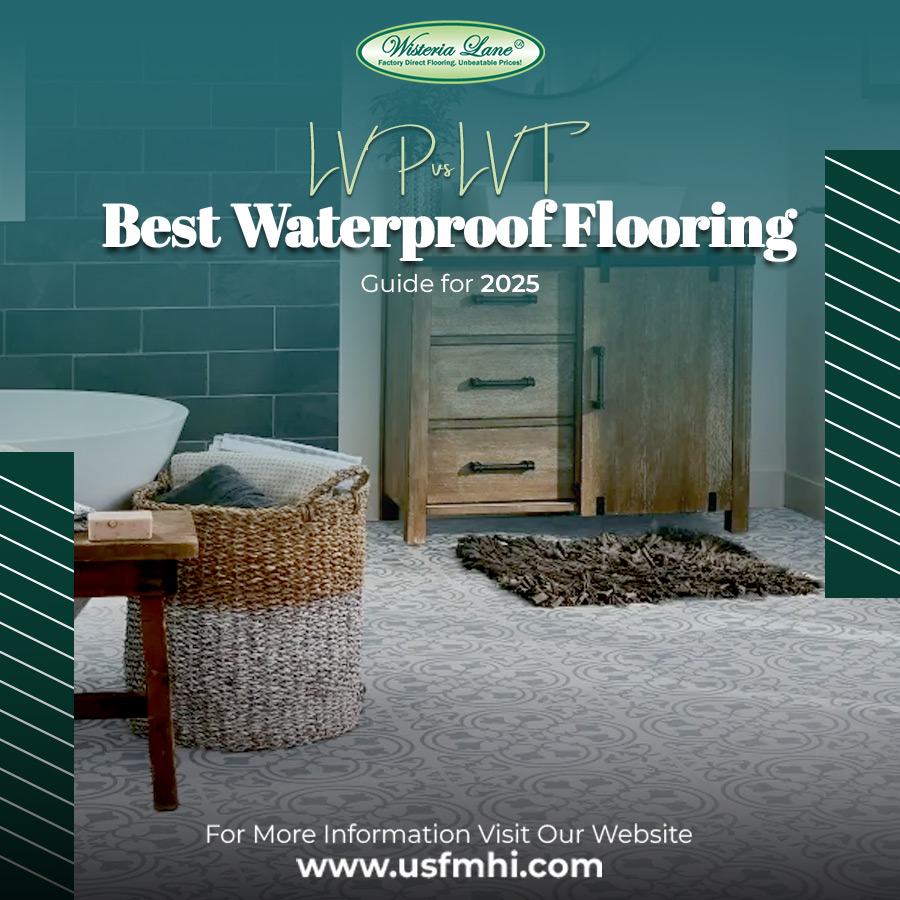LVP vs LVT: Best Waterproof Flooring Guide for 2025

Floors take a beating. Spilled coffee, muddy paws, dropped toys—it’s nonstop. That’s why waterproof flooring is the go-to choice for 2025 homes. But once you start looking, two names keep popping up: LVP and LVT.
They sound similar. They’re both tough, stylish, and made to last. So how do you pick the right one?
Here’s a clear, no-fluff guide to LVP vs LVT that real homeowners can use.
Let’s Start With LVP
LVP stands for Luxury Vinyl Plank. Think: the warmth of wood, minus the upkeep.
It’s built to look like hardwood flooring—oak, walnut, maple, you name it. Some planks even have knots and grooves you can feel. That texture gives it a real-deal look that’s hard to beat.
The biggest win? It’s waterproof. Spills wipe right up. Dogs can dash across it. No warping, no stress.
If you’re looking for waterproof LVP flooring, this is a strong pick for living rooms, bedrooms, kitchens, and even basements.
It’s quiet underfoot, soft enough for bare feet, and clicks together like a puzzle.
Now, What About LVT?
LVT means Luxury Vinyl Tile. This one’s for folks who love the clean look of tile or stone—but not the cold, hard surface.
LVT mimics ceramic, marble, and slate. It comes in square or rectangular pieces and can be installed with or without grout lines.
It’s still vinyl, so it’s waterproof. But it looks like real tile—perfect for bathrooms, laundry rooms, or anywhere water likes to hang out.
You get the durability of tile without freezing your toes off. That’s a win in any home.
What’s the Real Difference Between the Two?
LVP vs LVT comes down to look, feel, and where it’s going.
- LVP looks like wood planks.
- LVT looks like stone or ceramic tiles.
- LVP feels warmer and softer.
- LVT adds a sleek, clean finish to wet rooms.
- Both are waterproof, strong, and easy to clean.
Some homeowners mix both. LVP in the living spaces. LVT in the bathrooms. It works beautifully.
Pros and Cons—Let’s Keep It Honest
LVP Pros:
- Looks just like hardwood
- Softer underfoot
- Kid- and pet-friendly
- Easier on the budget than real wood
LVP Cons:
- Not the best choice if you want a stone look
- Extra-wide planks may feel off in smaller rooms
LVT Pros:
- Mimics tile without the cold surface
- More slip-resistant in wet areas
- Great for modern or minimal design
- Long-lasting and tough
LVT Cons:
- Can feel firmer on your feet
- Some styles need glue, which means more prep
So…Which Should You Go With?
That depends on your space, your style, and your day-to-day life.
Choose LVP if you want a warm, cozy wood look in living spaces. It’s great for open floor plans and family rooms.
Go for LVT if your main concern is moisture. Bathrooms, laundry zones, and entries love LVT. It’s built to take a splash.
Can’t decide? You’re not alone. Many homes use both. It’s about matching the floor to the room—not just the look, but the feel.
Final Word from the Floor Folks
Choosing flooring is a big deal. You’ll walk on it daily, see it constantly, and rely on it to hold up under real life. So it needs to be more than pretty—it has to be practical too.
The LVP vs LVT question isn’t about right or wrong. It’s about what works best for your home.
If you’re searching for LVP flooring near me, visit a showroom, grab samples, and walk on them barefoot. Feel the texture. Picture the space.
That’s how you find a floor you’ll love—not just this year, but for many years to come.


